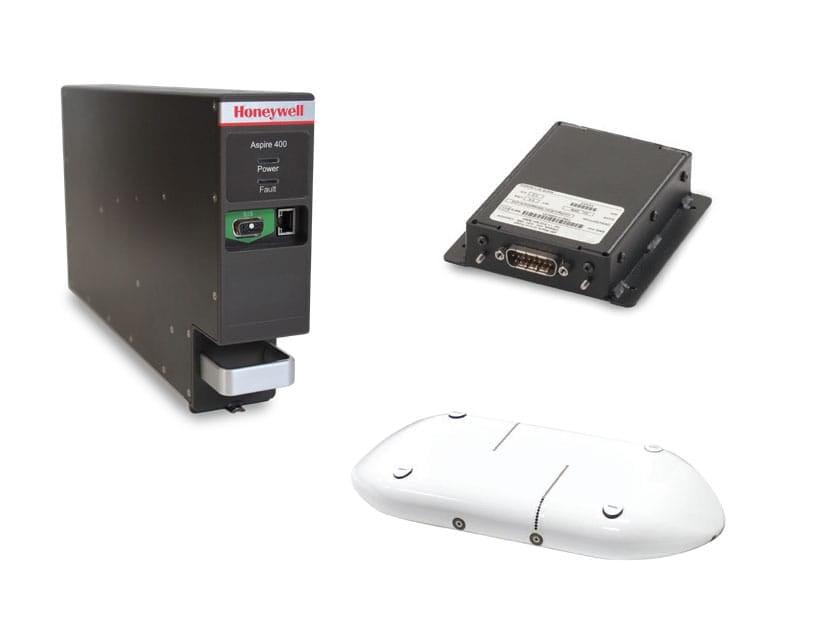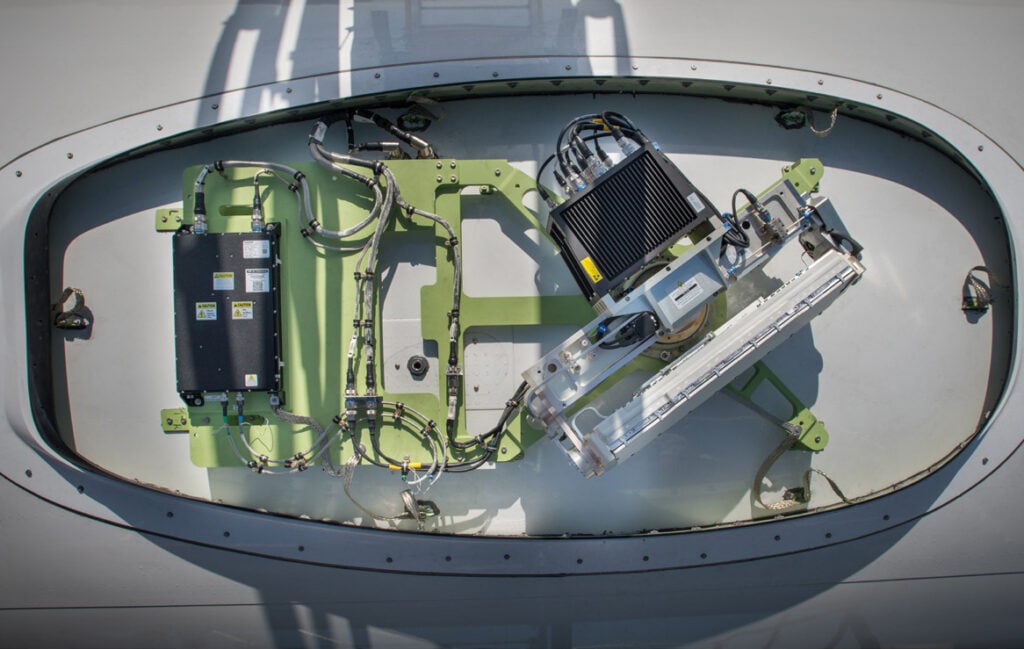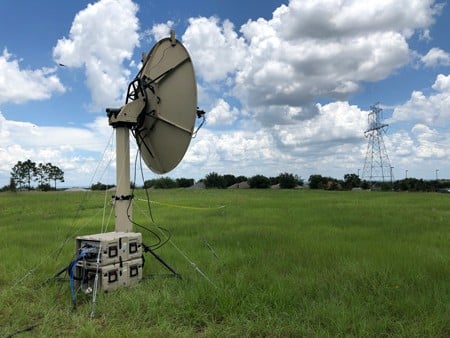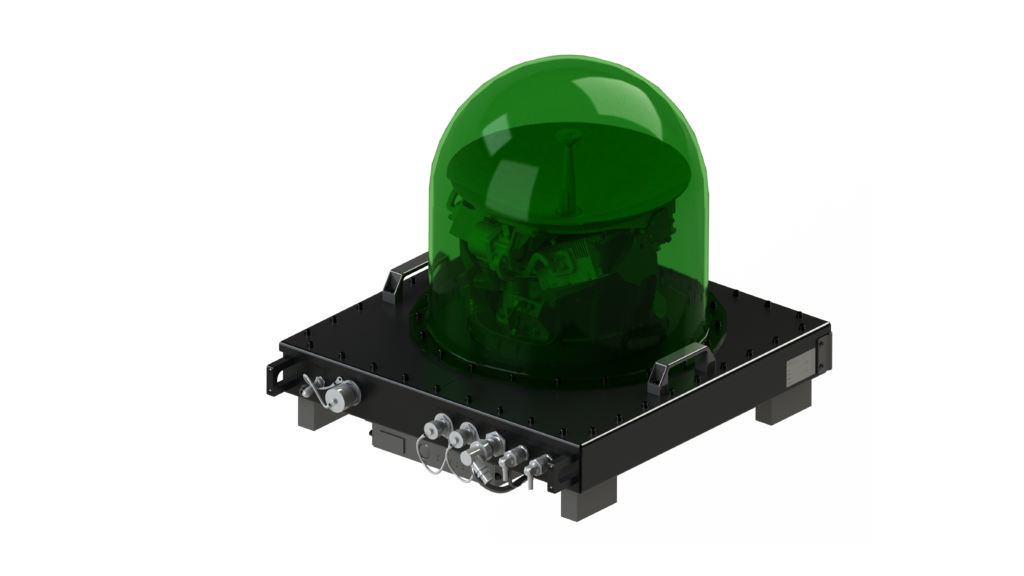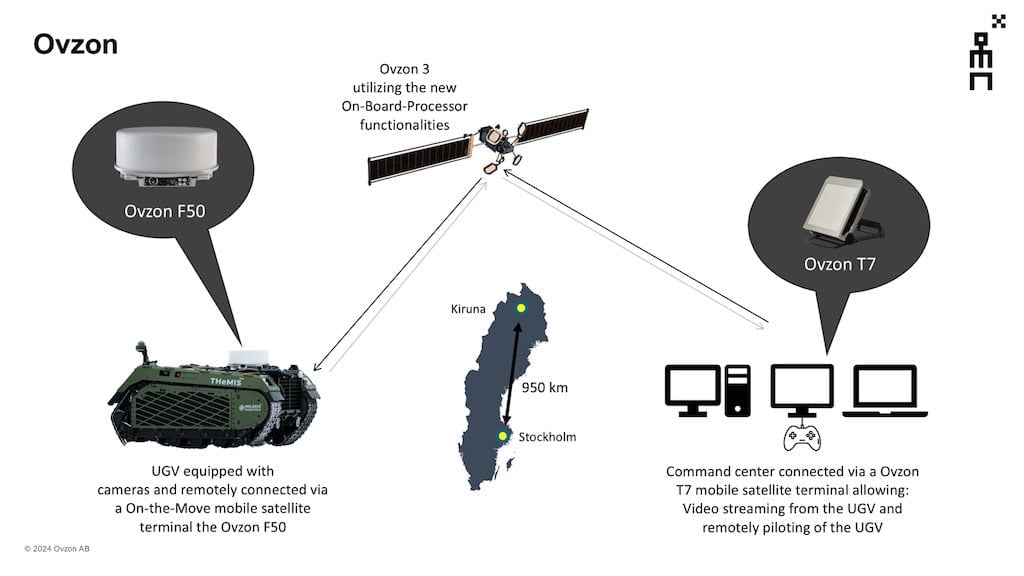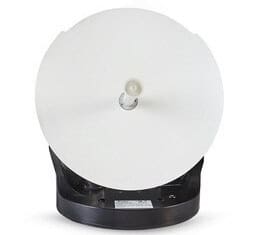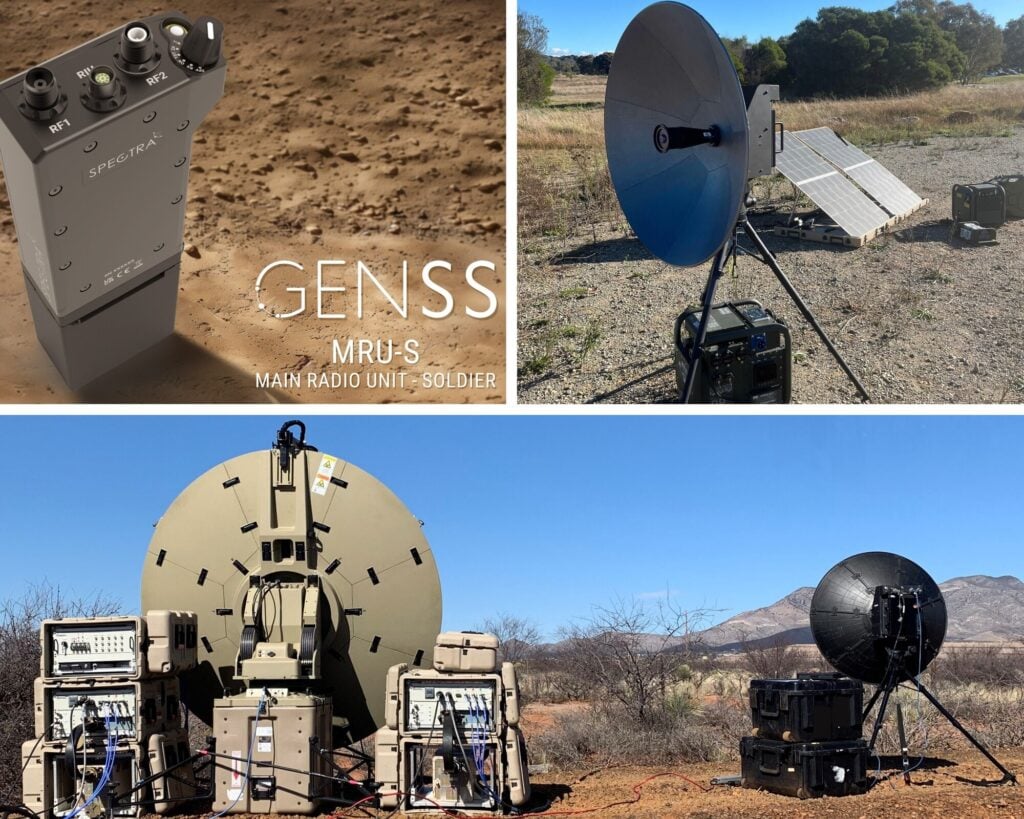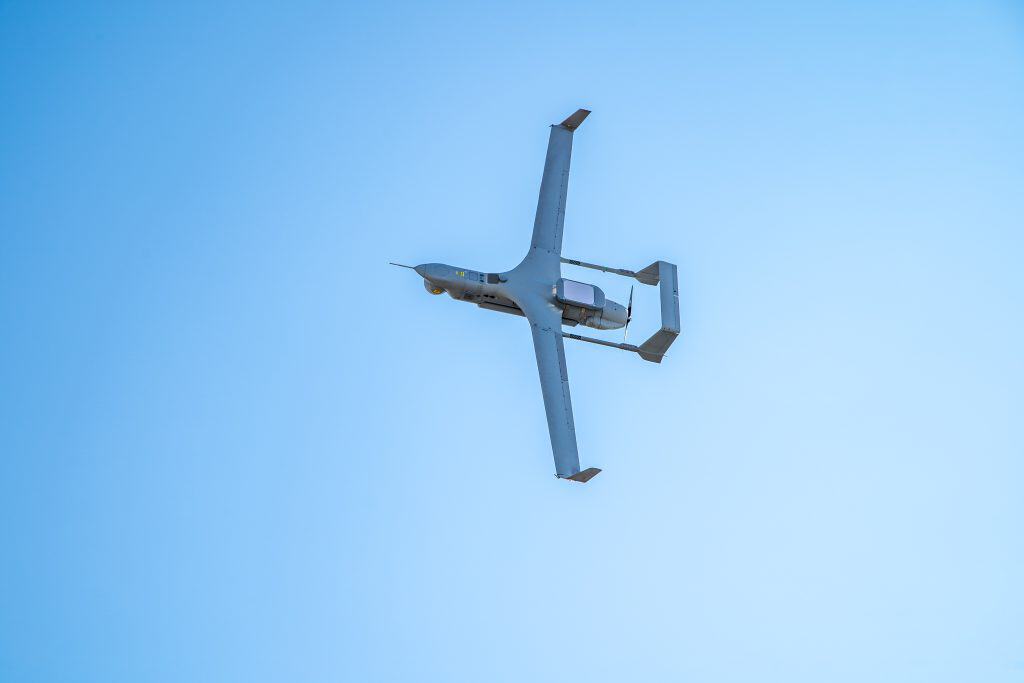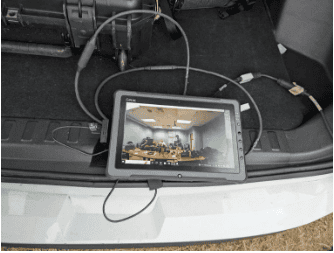Military Satellite Communications (Mil SATCOM) technologies perform an essential role in modern military tactical communications. Field-proven Mil SATCOM solutions are deployed across a broad range of defense applications including military aircraft, vessels, vehicles and portable terminals.
Introduction to Military SATCOM
All branches of the military rely on Satellite Communications (SATCOM). SATCOM is used by sea, land, air and space forces because of its ability to traverse long distances or bypass obstructions.
Excepting some High Frequency radio transmissions, all radio waves travel in a line-of-sight trajectory. In practice the antenna of the transmitting radio must have an unobscured ‘view’ towards the receiving radio. The taller a radio’s antenna, the further its transmissions can travel. A radio with an antenna two metres (six feet) above the ground can send and receive transmissions across a range of circa six kilometres/km (four miles). The higher the antenna, the longer the range. An antenna atop a 300-feet (91-metre) hill will have a range of circa 40km (24 miles).
Placing an antenna on a hill will not necessarily mean transmissions reach their intended recipient. Other hills may block the transmission if the receiving radio is in a valley. In urban areas, buildings and objects can block a radio’s line of sight. Trees in a forest can have a similar effect. This does not necessarily mean the radio traffic will not reach its destination. However, by colliding with objects and obstructions the traffic may become incomplete or distorted. This can have potentially dangerous ramifications in a military context.
SATCOM ‘outflanks’ these obstructions by beaming radio traffic into space where it is received by a satellite. These satellites orbit thousands of miles above Earth. By going upward, the radio waves avoid obstacles on the ground. The satellite retransmits the traffic back down to Earth to its intended recipient.
Thus, SATCOM has two uses: It helps avoid obstacles impeding relatively short-range radio traffic. It also allows two radios to communicate over intercontinental distances by avoiding the curvature of the Earth: A radio in New York would need an antenna at 2.6 million feet altitude (800,000m) to reach a radio 5,570km (3,461 miles) away in London. A satellite in space thus acts as the radio’s antenna to achieve this intercontinental range.
Military Examples:
Two hypothetical military examples illustrate this: A dismounted special forces team is on a counter-insurgency mission. The team uses Mil SATCOM to communicate with their headquarters thousands of kilometers away in their home country. Similarly, two military vehicles may be separated from each other by a mountain range impeding their LOS V/UHF radios. SATCOM will let these vehicles bypass the mountain range by bouncing their communications traffic across a satellite. SATCOM is routinely used by dismounted troops, vehicles, aircraft, warships and submarines, along with fixed or deployed headquarters, bases and installations.
Uses of Military Satellite Communication
Military SATCOM is used by deployed troops, naval vessels, aircraft and spacecraft to maintain contact at the tactical, operational and strategic levels. For example, deployed special forces troops maybe operating hundreds of miles from their headquarters in a spartan environment. SATCOM maybe the only means they have of sending and receiving radio traffic across such vast distances. This may also be the case for aircraft or ships far away from their bases. SATCOM also enables a deployed expeditionary force, possibly in a theatre of operations far away from their country, to keep in touch with commanders back home.
MIL SATCOM Architecture
Military Satellite Communications (MILSATCOM) provision includes four elements. Firstly, there are the satellites. These are served by fixed or mobile SATCOM terminals furnishing troops, platforms and bases. Communications may also occur via a teleport, a large ground station where traffic is sent and received. Also included in the architecture is the infrastructure supporting the satellites and terminals. This includes installations from where the satellites are controlled and maintained.
SATCOM Frequency Bands
Militaries use an array of communications satellites including those deployed solely for military use, those used for government communications plus privately-owned communications satellites and SATCOM services. SATCOM is typically performed using several specific frequencies reserved by the International Telecommunications Union (ITU). Ultra-High Frequency, C-, S-, L-, X-, Ku- and Ka-bands all contain sub-bands used for SATCOM.
There is no single waveband satisfying all SATCOM requirements. All have advantages and disadvantages. Some maybe able to carry heavy traffic loads but are susceptible to weather interference. Others may work well in bad weather but only carry narrowband communications. Some bands may need large SATCOM antennas best suited for static, land-based applications. Others may use small antennas suitable for aircraft. The ITU has designated X-band SATCOM frequencies as solely for military use. However, as this band has become increasingly congested, military SATCOM has embraced other wavebands.
Products (6)
Related Articles

Advanced Solutions for Defense Modernization: Propulsion, Sensors, Communication & Augmented Reality Systems
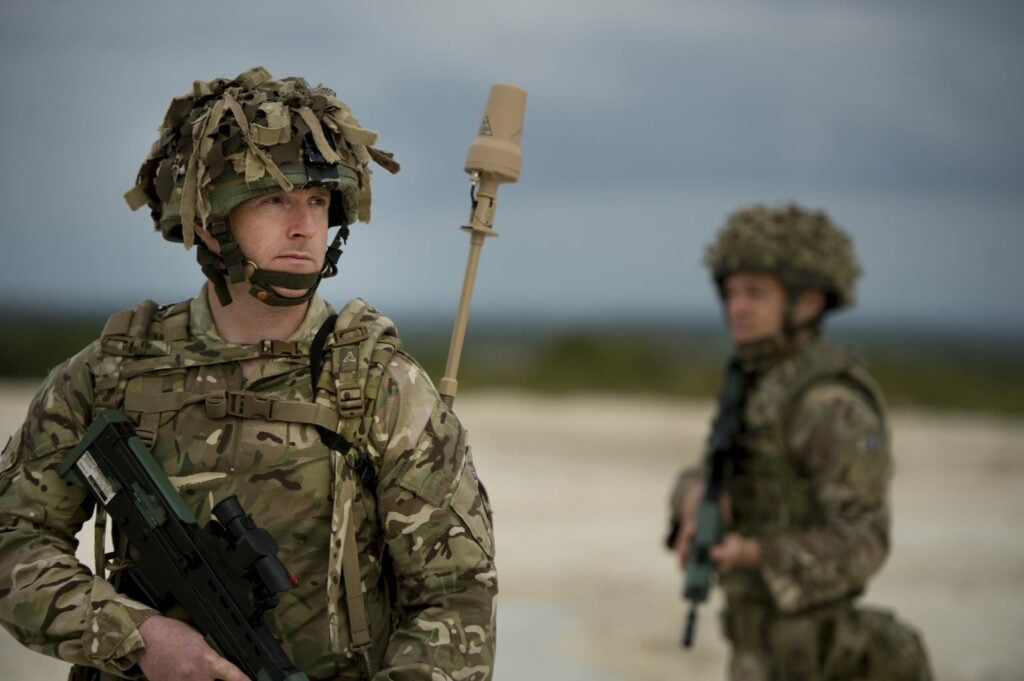
BLOS Strategic Communications Systems and Tactical Radio Range Extension Technologies






